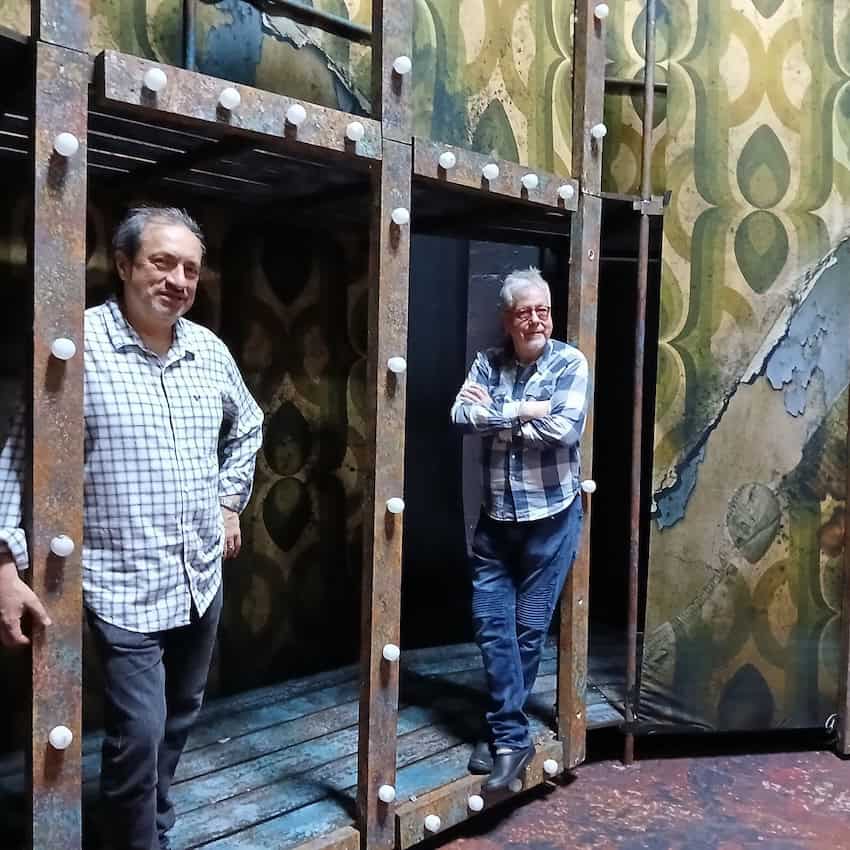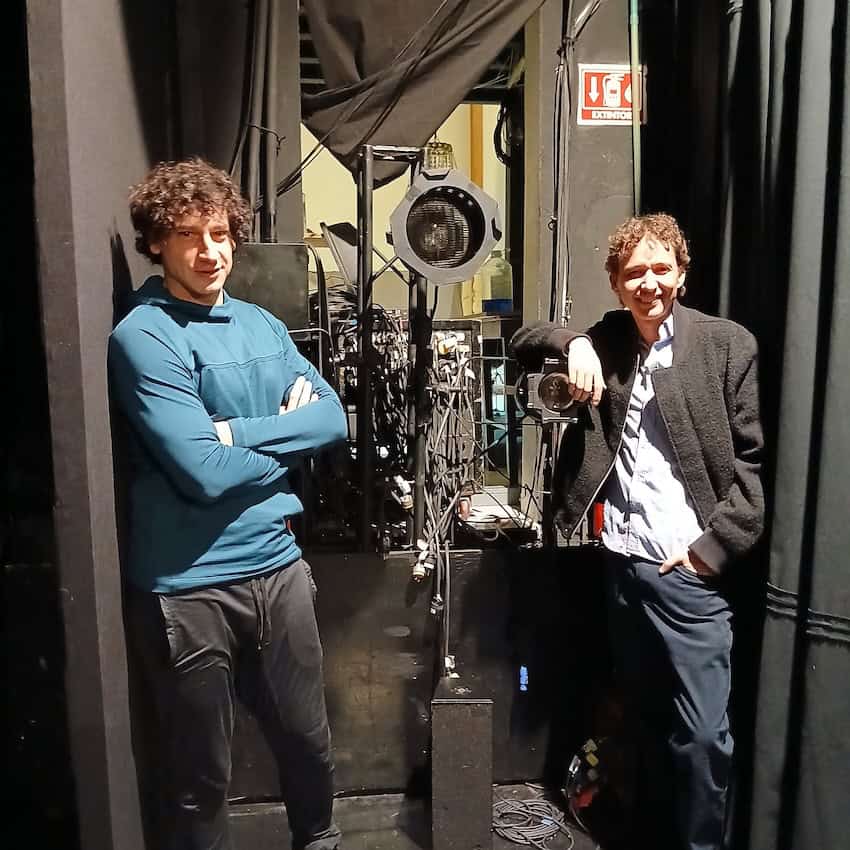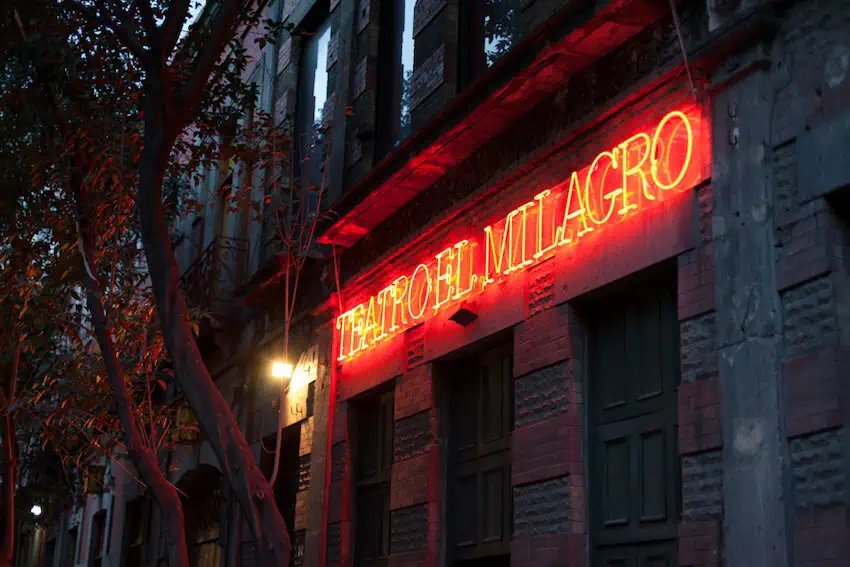“Little Shop of Horrors,” “Rent,” “Avenue Q” and “Hamilton”: All had their beginnings off-Broadway. More importantly, off-Broadway — and don’t forget Off Off Broadway — is the playground in the United States for experimental theater and where, frankly, the cool people go to the theater.
Here in Mexico City, one can see “Lion King” and “Spamalot” and other hits from London and New York. But here, the cool people go to the theater in Colonia Juárez.

Conventional wisdom says that the hipster crown will soon be passed from Roma to La Juárez and the signs are clear that it will be even hipster-ier. Jackhammers, circuit saws and cement trucks are the soundtrack of this neighborhood as restaurants, speakeasies, photo studios and dance schools pop up on a weekly basis. But the enduring force embedded in La Juárez is its rich history of independent theaters.
One of the best examples of this vibrant new atmosphere is located in the charming Bazar Fusión on Calle Londres which houses boutique clothiers, fine food and even a cigar shop. Most importantly, Foro 37 brings comedy, magic and intimate productions to round out a perfect evening
Isabel Arce, General Director, who opened Foro 37 nine years ago, says “When we first opened the theater it was a very unknown neighborhood. It was like the backyard of Roma.” Yet, like many artistic hubs, La Juárez was simply cheaper and thus attracted artists of all kinds looking for inexpensive spaces to create.
And as Roma becomes more known for restaurants, Juárez is becoming much more of a cultural core. While fine dining is certainly available in Juárez, Foro 37 can add to an evening with a real feeling of connecting with an intimate performance. It is, perhaps, what many people who enjoy the grand blockbusters like “Chicago” miss out on. With the Foro 37’s seat capacity at 49, Arce’s vision of personal experience has been a great success, and she hopes for more.
From musicals to comedy and even a play inspired and written from the perspective of prison inmates, Isabel Arce will always be on the lookout for material that inspires.
On the other side of Avenida Insurgentes, closer to Zona Rosa, is the Teatro Varsovia, where directors Rodrigo González and Raúl Tamez bring a variety of acts to La Juárez. Interestingly, the theater was built as part of a housing complex by the famed functionalist architect Mario Pani. The idea was that a theater is just as important as plumbing or a working elevator. Yet as time passed, so did architectural trends, and the building went on to be used for other purposes. What this meant for González and Tamez was that they didn’t need to do much building or hunting for used theater seats; they only needed to put on excellent productions.

“This neighborhood has always been bohemian,” says Tamez, explaining the intellectual climate that became the center of the LGBTQ+ rights movement in Mexico. “Also because of that, there were lots of cabaret and trans shows.”
Teatro Varsovia, with its mixed audience of young and old, gay and straight, Chilango and gringo, produces a wide variety of shows beyond just plays. They have all kinds of music from Baroque to rock and roll to comedy shows and musicals. But when a play is staged here, Tamez explains, “It has to be raw and emotional.” Productions at the Varsovia follow in the tradition of playwrights like David Mamet and Wendy Wasserstein, who utilize small settings with emotionally charged characters.
For a great outing in La Juárez where one will be pleasantly surprised, Teatro Varsovia provides and opportunity for something new… or classic…or edgy…or heartwarming. All are available.
Finally, there is the Teatro Milagro, perhaps the pluckiest of the theaters listed here. Unlike Varsovia, getting this venue running had to retrofit an otherwise forgotten building the way many independent spaces need to. But that is a tradition that goes back to the 1960s according to playwright David Olguín, who sits on the theater’s steering committee.
“It was a slow process,” Olguín says, referring to the rebuilding after the devastating 1985 earthquake. And inside the theater, one can see the reinforcements that have been installed to be within safety codes. In a way, it helps support the idea that creative people will make use of any space with potential.
For the last 17 years, Milagro has mounted productions as varied as “Waiting for Godot” or Lysistrata to modern dramas like Aldo Martínez Sandoval’s “La caducidad de la lavanda,” which is set in a morgue. New plays often premier at the Milagro.
There are many things that indicate that Colonia Juárez will be outshining Roma as the most fashionable and culturally cutting-edge part of the city, and a strong independent theater scene is vital for that success.
Watch out, Roma: Juárez is biting at your heels.
Jimmy Monack is a teacher, photographer and award-winning writer. He profiles interesting people all around the world as well as writing about and photographing rock concerts. He lives in Mexico City. www.jimmymonack.com




